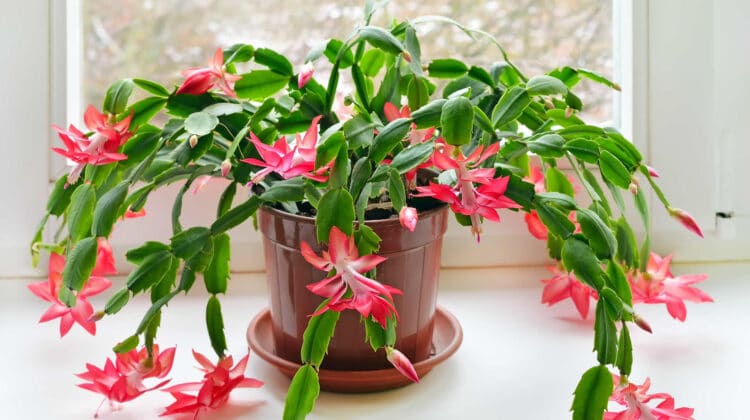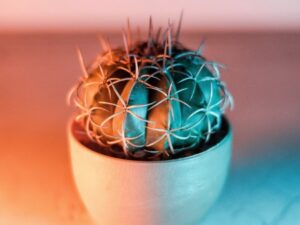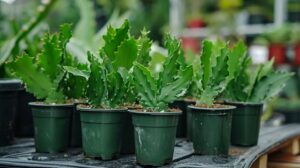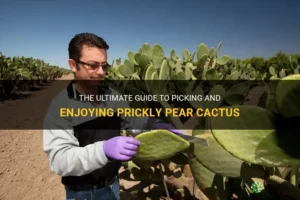As the holiday season approaches, many households adorn their interiors with festive flora, and among these is the enchanting Christmas cactus. Aptly named for its vibrant blooms that appear just in time for yuletide celebrations, the Christmas cactus has captivated many a heart. However, pet owners often wonder: Are these striking plants safe for their feline companions? This article delves deep into the potential risks and provides clarity on the toxicity of Christmas cacti to cats.
Exploring the Nature of the Christmas Cactus
The Christmas cactus, or Schlumbergera, is not a true cactus in the conventional sense. Unlike its prickly relatives, this species thrives in humid environments, often found nestled in the canopies of Brazilian rainforests. Its distinctive segmented stems and beautiful, tubular flowers lure many into their homes as a symbol of festive cheer. Yet, as with any houseplant, a careful understanding of its properties is essential, particularly for households with pets.
What Compounds Make Up the Christmas Cactus?
Unlike many common houseplants that pose significant toxic threats, the Christmas cactus is largely considered non-toxic to cats and other pets. The American Society for the Prevention of Cruelty to Animals (ASPCA) identifies it as safe for cats, meaning ingestion is unlikely to lead to any serious health issues.
The composition of the Christmas cactus includes compounds that are common among many tropical plants, such as organic acids and polysaccharides. While these substances can sometimes cause mild gastrointestinal upset in felines—like vomiting or diarrhea—the effects are generally transient and not life-threatening. Nonetheless, it’s prudent for pet owners to remain vigilant; any unusual behavior in cats should prompt a prompt consult with a veterinarian.
Understanding Pet Behavior and Plant Interaction
Many cats exhibit a natural curiosity that drives them to explore their environment, often including potted plants. This behavior can lead to potential interactions with the Christmas cactus. While the plant itself poses minimal risks, the engagement with its leaves or blooms may lead to not just an innocent nibble, but an erroneous conclusion about its safety. Thus, it becomes essential to consider how cats interact with these aesthetically pleasing plants.
Signs of Ingestion: What to Look For
If a cat shows an interest in a Christmas cactus, it’s important to observe for any signs of distress. Common reactions can include drooling, sporadic vomiting, and changes in appetite. Though these symptoms are not typically severe, they are indicative of an upset stomach or discomfort. Pet owners should keep an eye on their feline friends after they have been near the plant and seek veterinary advice if symptoms persist.
Creating a Safe Environment for Your Feline
To mitigate risks associated with curious kitties, consider strategies to keep your plants safe. Often, placing the Christmas cactus in high or inaccessible locations can reduce the likelihood of feline attention. Decorative shelving or hanging planters can serve both as a practical solution and a visually appealing decor choice.
Additionally, utilizing deterrents formulated for pets can be effective. Sprays that have a bitter taste may discourage cats from approaching the plant. Likewise, providing alternatives like cat grass or catnip can redirect your feline friend’s energy away from the Christmas cactus, keeping both the plant and your pet safe.
Lessons from ‘Non-Toxic’ Beliefs
While it’s encouraging to ascertain that the Christmas cactus is non-toxic to cats, it’s crucial to dismantle the notion that all plants labeled as ‘non-toxic’ are entirely safe in any context. Each pet responds differently based on individual health conditions, pre-existing allergies, and previous encounters with certain plants. It’s essential to continue monitoring how pets react to any new flora introduced into their environment.
Additionally, it’s advisable to conduct thorough research or consult with a veterinarian or pet toxicologist when considering new plants for your home, especially in a household with multiple pets. This precautionary approach helps to avoid unexpected health crises, particularly when other species might be more sensitive to specific botanical components.
Conclusion: Harmonizing Living Spaces with Safety
The delightful Christmas cactus can be a cherished addition to your holiday decor, thanks to its captivating blossoms and minimal risk of toxicity to cats. Understanding its unique characteristics enables pet owners to make informed decisions while fostering a serene coexistence between pets and plants. As the festive season draws near, consider blending the aesthetic beauty of flourishing plants with awareness of your pet’s safety, ensuring that both your home and your feline companions can enjoy the splendor of the decorations with peace of mind.





Leave a Comment